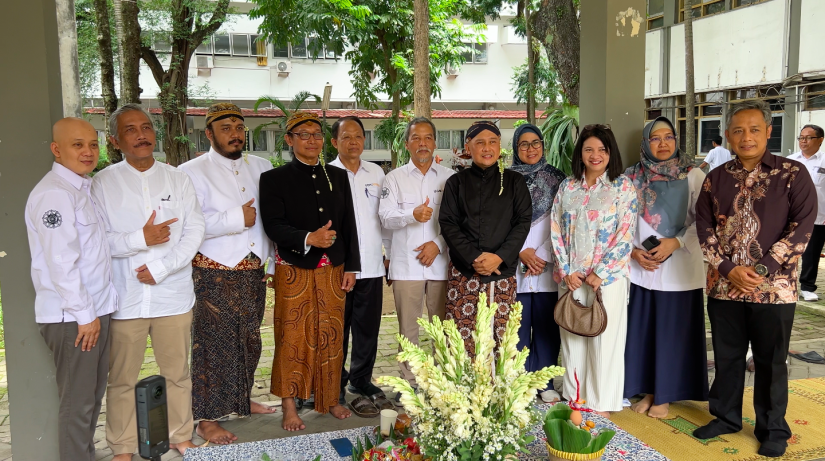
Yogyakarta, 3/2/2025 – Faculty of Cultural Sciences (FIB) at Universitas Gadjah Mada (UGM) held a ceremonial event to mark the demolition of Buildings A and B. This event took place at the connecting bridge between the two buildings, symbolizing a significant step in the development planning of the faculty. The demolition is part of a larger initiative to replace the old structures with modern facilities that better serve the needs of students and faculty alike.
The demolition of Buildings A and B has been officially announced and is currently open for bidding on the national auction portal. Interested parties can find more information at [this link](https://portal.lelang.go.id/lot-lelang/detail/1032493/UGM-Paket-gedung-dan-bangunan-untuk-dibongkar-di-lingkungan-FIB-di-Kabupaten-Sleman.html). This project aligns with the Sustainable Development Goals (SDGs), particularly in the area of sustainable infrastructure and urban development.
The ceremonial event, known as “Selametan,” is deeply rooted in Javanese culture and philosophy. It serves as a way to express gratitude and seek blessings for the future. The centerpiece of the celebration was a traditional “tumpeng,” a cone-shaped rice dish that symbolizes aspirations reaching towards the heavens. The tumpeng represents the masculine aspect of life, while the surrounding dishes reflect the feminine, emphasizing the balance and complementarity of both forces.
During the event, the attendees shared a meal that included various traditional foods, such as “ingkung,” a whole chicken that symbolizes humility and submission. This dish was presented in a way that reflects the spirit of togetherness and respect for the process of change. The gathering was not just a farewell to the old buildings but also a celebration of new beginnings.
The five-colored tumpeng served during the ceremony represented the concept of “pajupat,” symbolizing the duality of human desires and the need for purification. This aspect of the celebration highlighted the importance of self-reflection and the journey towards personal and communal growth. The event was a reminder that development planning is not just about physical structures but also about nurturing the community’s spirit.
As part of the celebration, attendees enjoyed “jajan pasar,” traditional snacks that reflect the evolving tastes of society. This element of the event emphasized the importance of adapting to change while honoring cultural heritage. The presence of “pisang,” or bananas, symbolized unity, as one bunch represents the strength of togetherness in facing the future.
The peak of the tumpeng, shaped like an egg, symbolized the embryo of life, representing new beginnings and the potential for growth. This imagery resonated with the faculty’s vision for the future, where new ideas and innovations can flourish in a supportive environment. The event also included offerings of chili, representing the act of seeking blessings and guidance from higher powers.
Beverages served during the ceremony included natural sources from the earth, such as coconut water, coffee, and tea, symbolizing the connection between nature and human life. This aspect of the celebration reinforced the importance of sustainability and the need to respect and care for the environment as part of the development planning process.
In conclusion, the Selametan event for the demolition of Buildings A and B at FIB UGM was not just a ceremonial farewell but a meaningful reflection on the values of community, growth, and sustainability. As the faculty embarks on this new chapter, the spirit of togetherness and cultural heritage will continue to guide its development planning efforts. The complete documentation could be accessed at https://www.instagram.com/reel/DFrmvw2SPtp/.
[Public Relation Faculty of Cultural Sciences UGM, Bulan Churniati]

